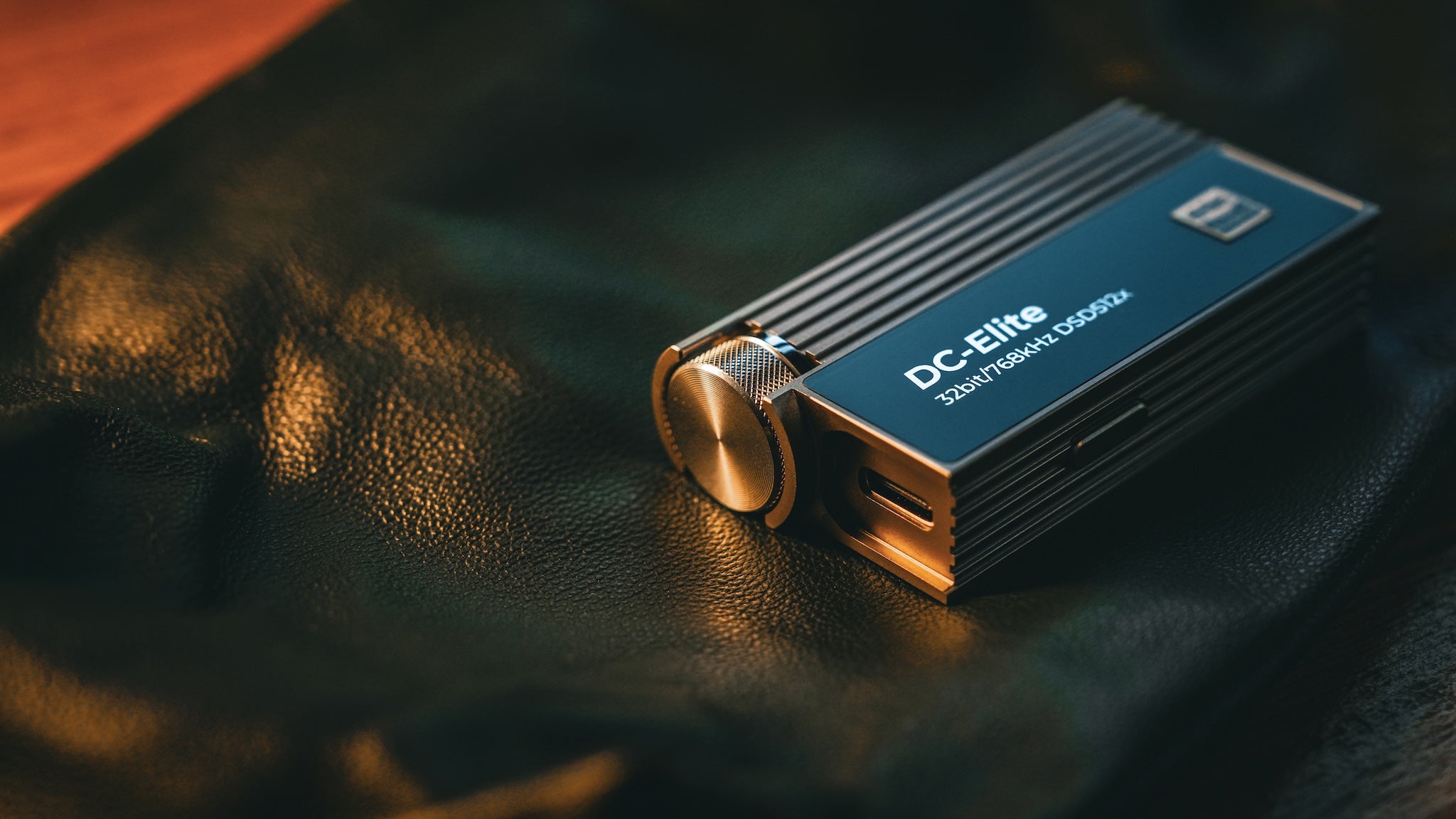Portable HiFi has had a huge explosion in popularity in the last few years, and a greater demand for better portable audiophile options has led to new products hitting the market that are more powerful and more refined than anything we’ve seen before. iBasso has a long history of excellence in the portable audio space, and their latest entry aims to wrap the technology behind their flagship DAPs up in an ultra-portable package and deliver it to hungry portable fans. Do they succeed in making a dongle DAC that truly commands a $449 price tag?
Top Level Info
- DC-Elite is a ultra-portable DAC with USB and S/PDIF connectivity
- Key aspects of the signal chain are based off of the DX320 Max DAP
- DC-Elite’s design aims to hit the ceiling of what’s possible with component quality and signal chain integrity in this form factor
Build and Design
DC-Elite comes in a fairly standard package, and includes OTG cables to connect to USB-C or Lighting devices, along with a protective case. The device itself is a bit bigger and heavier than most dongle style DACs, but remains pretty discreet in your pocket with your phone. The device itself has a sturdy aluminum build and vintage style design. It includes a leatherette case with the familiar green hue that we’ve seen in a number of iBasso cases. DC-Elite uses an analog volume control with a 24 position stepped attenuator that features prominently in the devices profile.
DC-Elite can output to 3.5mm single-ended or 4.4mm balanced, and there’s a button on the side of the unit which switches the 3.5mm headphone jack to S/PDIF mode. DC-Elite doesn’t have a battery, so the power is drawn from the connected device. In general this will have a notable impact on your phone’s battery life, but DC-Elite manages solid power output without a huge battery drain. The ROHM BD34301EKV DAC helps with this, as it’s designed to provide the best possible power and dynamics with the least amount of power draw.
iBasso has also carefully selected the components here to optimize sound quality, but at points, that may get in the way of convenience. The size and weight are greater than a lot of other devices in this class, and the stepped attenuator is the perfect example of something with benefits to the sound quality, but will be a step back in user experience from some people. When you put it all together, do the minor inconveniences of the design add up to a better sound?
Sound
DC-Elite does its best to match up to the sound of iBasso’s top tier DAPs, and comes very close. The detailed, reference sound certainly evokes the DX320 MAX, and the imaging and soundstage are impressive for a device in this class. Especially of note is the well extended treble which delivers excellent resolution without feeling harsh. DC-Elite presents a similar well-extended low-end, providing excellent bass quality without emphasizing any frequencies in particular.
DC-Elite’s imaging provides clear separation, with a wide stage that’s set slightly back from the listener. DC-Elite’s imaging is more of a “10 rows back at the arena” sound than a “in the room with the artist.” Pair it up with a set of headphones or IEMs with strong imaging and you’ll get a very clean, intensively immersive experience.
DC-Elite has some pretty good muscle for an ultra-portable DAC and does quite well with both high impedance dynamic headphones like the Sennheiser HD660S2 and with easier to drive planar magnetic headphones like the Meze Empyrean 2 or HIFIMAN Arya Organic. While it won’t be on the shortlist for recommendations for the Modhouse Tungsten, DC-Elite is a great choice for IEMs, and offers a super-low noise floor.
Comparison: iFi GO Bar Kensei ($499), DITA Navigator ($299)
Bigger, beefier dongle DACs are becoming all the rage, and while DC-Elite may be the beefiest at the moment, other products like the DITA Navigator and iFi GO Bar Kensei tread in similar territory. Navigator offers a similar rugged design, while Kensei packs a similar punch while providing a similar sort of punch.
Each of the units offers a package that’s simple, but more than sufficient for most uses, with OTG cables all around. Testing them out with a few different devices, there wasn’t really any gap in the basic usability and connectivity. The double-edged sword of DC-Elite is the analog volume control and stepped attenuator as on the one hand, it’s not as smooth to operate as the other two, but on the other hand, it’s the only device that gives you clear feedback on your volume level when music isn’t playing 100% of the time.
In terms of sound, DC-Elite leans the most towards an analytical sound, while Kensei is the warmest of the three (a warmth that can be augmented further with the XBass feature.) Navigator is in the middle with a just slightly romantic sound that maintains a neutral, detailed feeling with a touch of warmth and smoothness to the sound. All three perform similarly with a range of headphones and IEMs, but Kensei needs iEMatch turned out to match the much lower noise floors of DC-Elite and Navigator.
Between the three, it really comes down to exactly what you’re looking for. Do you want the bigger feature set of GO bar Kensei? The super clean signal path of DC-Elite? The strong price performance of the Navigator? When in comes down to it though, in terms of pure sound quality and detail, DC-Elite comes out on top.
The Bottom Line
DC-Elite isn’t the smallest, cheapest, or most feature packed DAC in its class, but iBasso has put extraordinary effort into giving it the best possible components and sound quality to deliver some of the most intense detail and resolution imaginable in this form factor. If you need a truly portable form factor, but don’t want to compromise on sound, nothing else out there can compete with DC-Elite.









